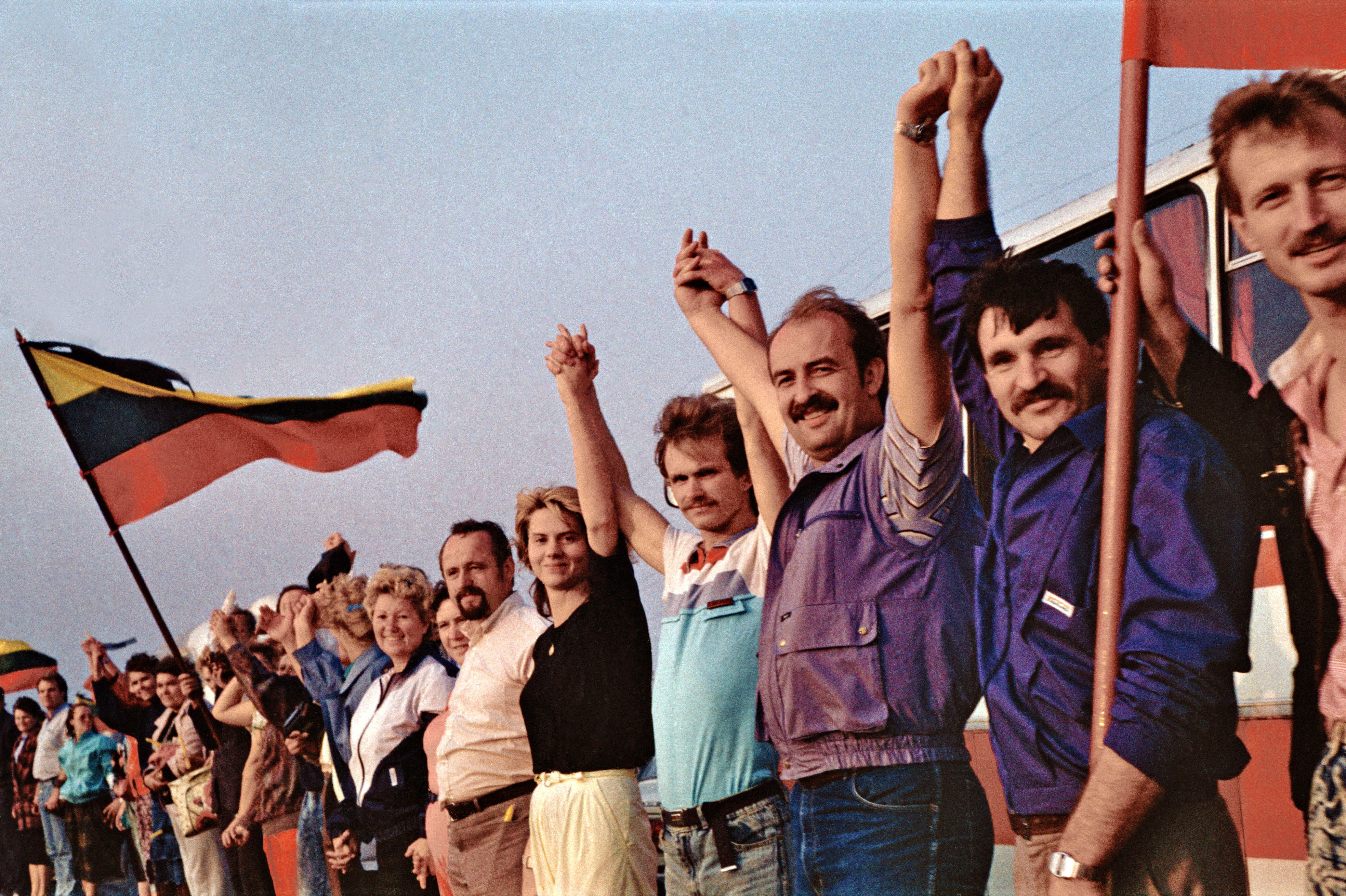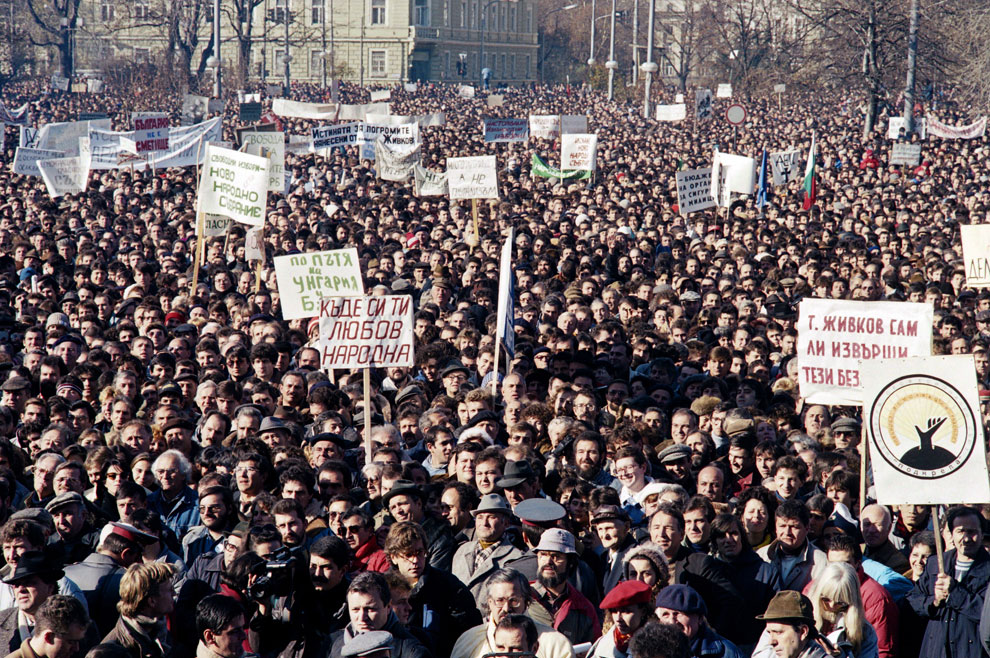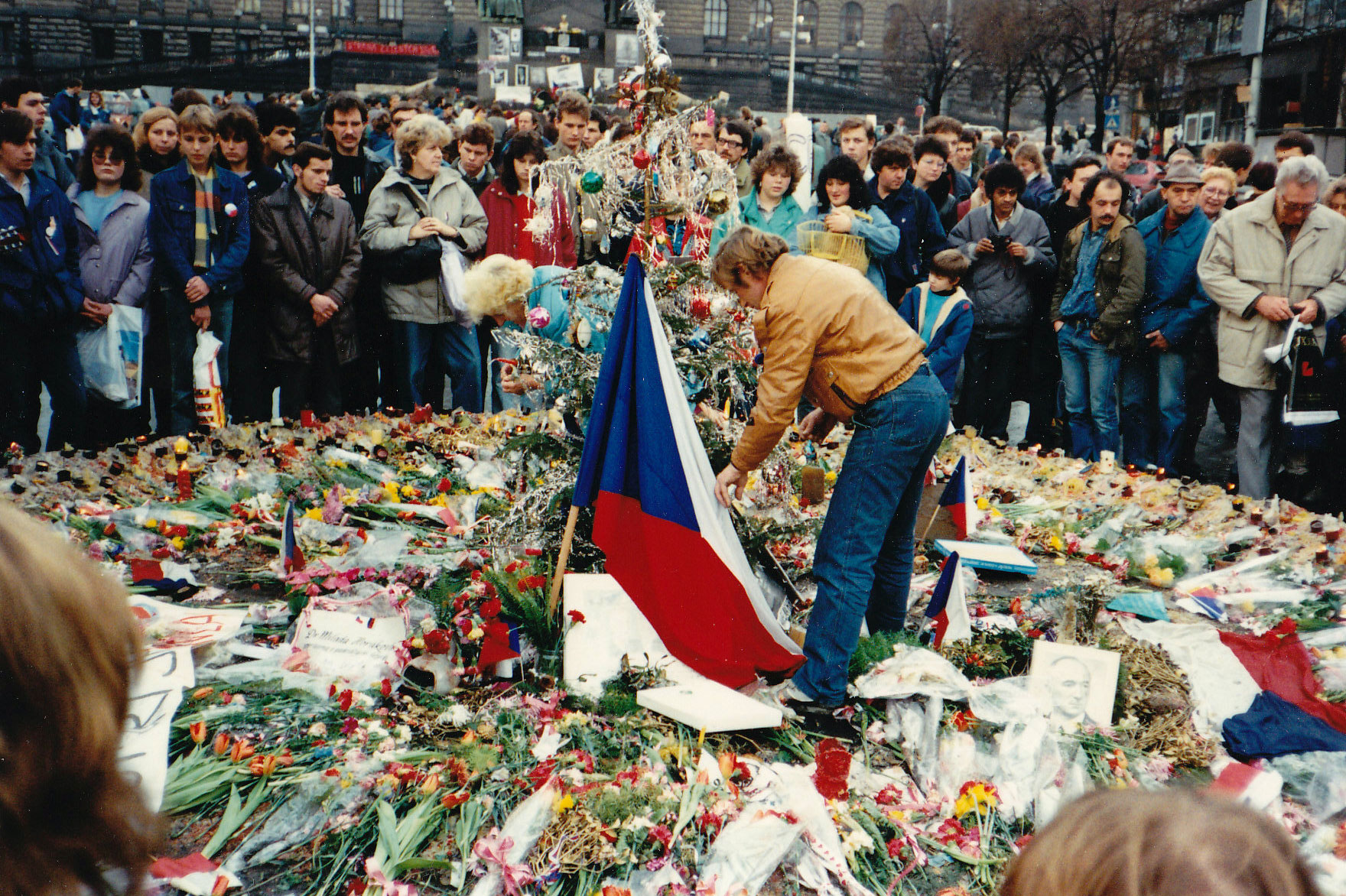Fall of the Wall
Partnerships


UK Prime Minister Winston Churchill speaks alongside US President Harry S. Truman (seated, centre) at Westminster College in Fulton, Missouri on 5 March 1946. Photo from America’s National Churchill Museum.

May Day anti-Communist protesters waving Solidarność banner in Warsaw on 1 May 1989. Photo: © Druszcz Wojteic/AFP via Getty Images

People hug at the Pan-European Picnic on the Hungary-Austria border on 19 August 1989. Photo: picture-alliance/dpa/Votava via DW

The Baltic Way human chain in Lithuania on 23 August 1989. The Baltic Way included over 2 million people across Estonia, Latvia and Lithuania. Photo: Wikimedia Commons/Kusurija

A crowd of 50,000 protesters marches in Sofia on 18 November 1989, demanding free elections and an end to the Communist regime. This followed the march of 10,000 Ecoglasnost environmental activists on 3 November, protesting a plan to divert the course of two large rivers, which was the first major demonstration under communism in Bulgaria. Photo: © Joel Robine/AFP via Getty Images

Dissident (and future president) Václav Havel and protesters commemorate the struggle for freedom and democracy in Prague during the Velvet Revolution, November 1989. Photo: Wikimedia Commons/MD

People join hands atop the Berlin Wall in Germany on 9 November 1989.

Protestors wave Romanian flags at an anti-Communist rally in Bucharest on 21 December 1989. Photo: © AFP via Getty Images

US Secretary of State Madeleine Albright with the Foreign Ministers of Czechia, Hungary and Poland at the signing ceremony of their Instruments of Accession to the North Atlantic Treaty in Independence, Missouri, United States on 12 March 1999. © REUTERS
